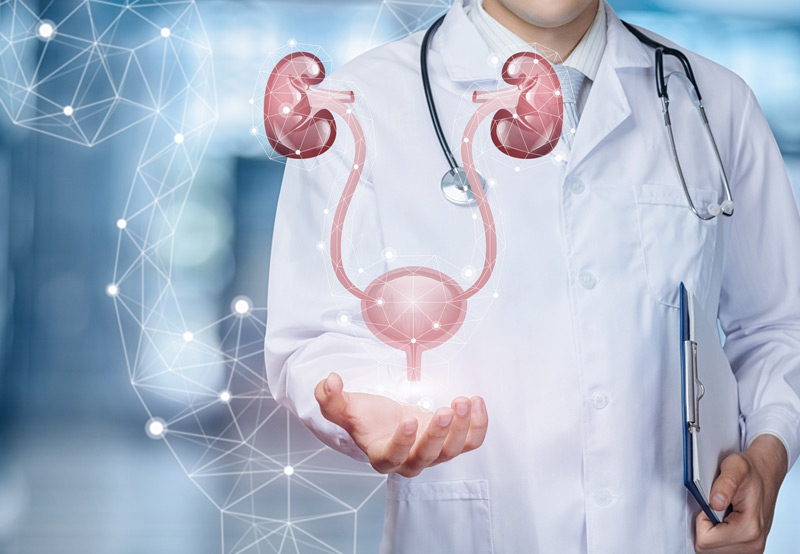

Neurogenic bladder is a condition that occurs when an individual cannot control their bladder due to problems with the brain, spinal cord, or nerves.
How The Urinary System Works
The urethra, bladder, and kidneys play a key role in the urinary system, helping store and pass urine. The kidneys make urine and move it to the bladder, where it is stored until it is emptied with the help of the urethra, the tube that carries urine from the body.
The bladder is relaxed when it isn’t full of urine. As the bladder is getting filled, nerve signals in the brain let the individual know it is time to urinate. During urination, the brain tells the bladder muscles to squeeze, forcing urine out through the urethra. The sphincters in the urethra are muscles that help keep the urethra closed until it’s time to urinate.

Causes of Neurogenic Bladder
Damage to the nerves and muscles that control the bladder through illness or injury could keep the muscles from tightening and relaxing at the right time. As a result, some individuals may develop overactive bladder, a condition in which the muscles are overactive and squeeze more often than normal, forcing the individual to urinate before the bladder is filled with urine. In other cases, weak sphincter muscles can let urine pass before the individual has reached a bathroom, leading to incontinence.
Underactive bladder occurs when the bladder muscle won’t squeeze properly when it’s filled with urine and won’t empty fully or at all. The sphincter muscles may also remain tight when the individual is trying to urinate. Some individuals may experience both underactive and overactive bladder.
Symptoms of Neurogenic Bladder
Symptoms of neurogenic bladder will vary, depending on the type of nerve damage causing the condition. Symptoms may include:
- Urinary tract infection caused by viruses, harmful bacteria, or yeast growing in the urinary tract
- Sudden urge to pass urine
- Frequently passing urine (typically more than eight times in 24 hours)
- Inability to fully empty the bladder (due to diabetes, syphilis, polio, or major pelvic surgery)
- Urine dribbles
- Incontinence
Diagnosing Neurogenic Bladder
Individuals experiencing symptoms of neurogenic bladder should schedule an appointment with their physician or urologist to obtain an accurate diagnosis and begin treatment.
During the initial appointment, the physician will ask questions about the patient’s:
- Medical history
- Daily habits
- Duration and effect of symptoms on daily life
- Over-the-counter and prescription drugs
- Current diet and fluid intake
In some cases, the physician may ask the patient to keep a bladder diary to track how often they use the restroom and experience incontinence. A pad test may also be done to track incontinence.
A physical exam may also be done to evaluate a female patient’s abdomen, pelvis, and rectum. In men, the rectum, prostate, and abdomen may be checked.
Various tests may be necessary to help diagnose the condition. These may include:
- Urine culture to check for infection or blood.
- Bladder ultrasound to check see how well the bladder is emptied after passing urine
- Cystoscopy to observe the bladder
- Urodynamic testing to check how well the lower urinary tract stores and releases urine
- Imaging tests, such as CT scan, ultrasound, or X-ray
Treatment will vary, depending on the patient’s overall age and condition, the cause of the nerve damage, symptom severity, and treatment expectations.
